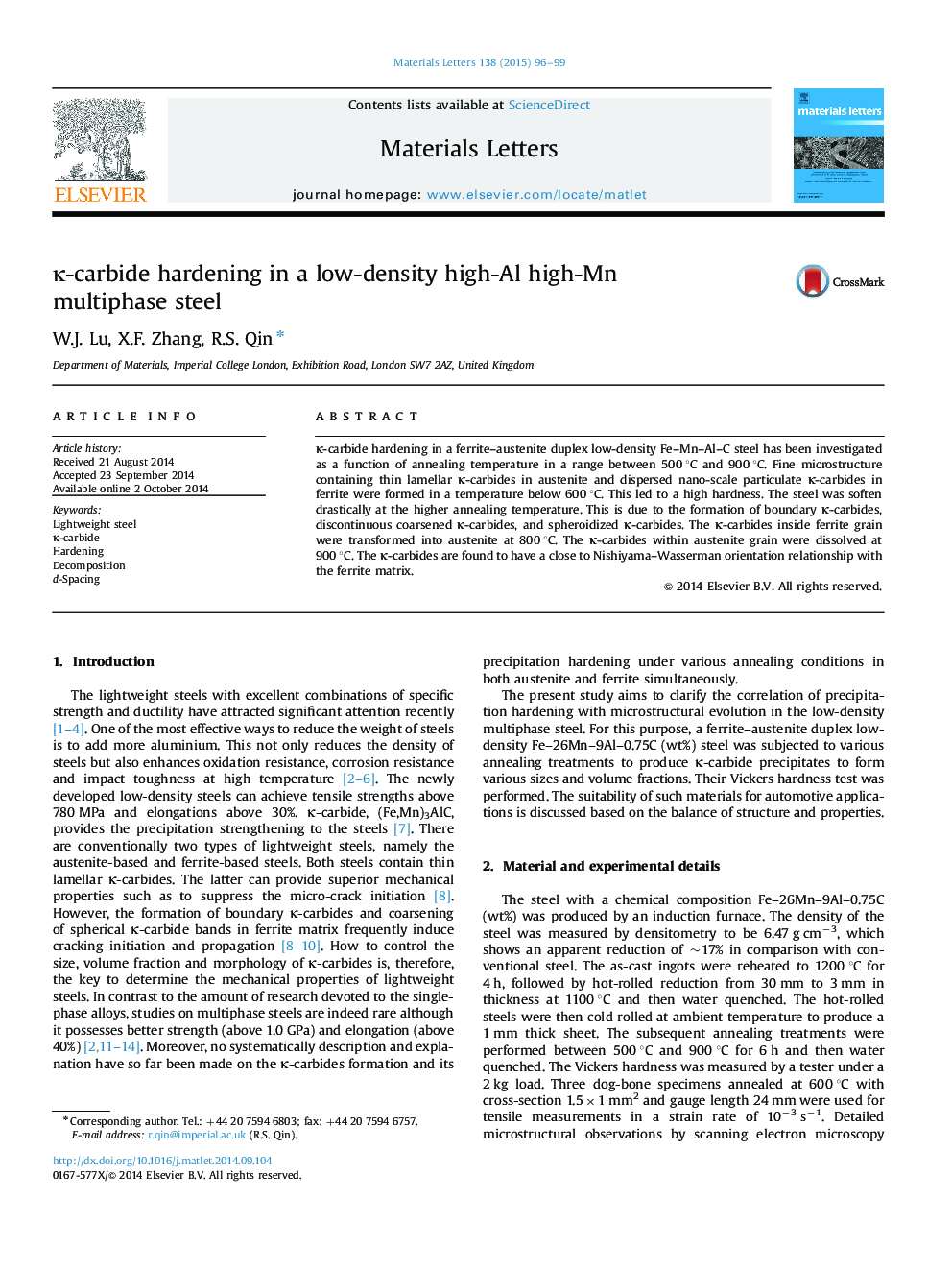| Article ID | Journal | Published Year | Pages | File Type |
|---|---|---|---|---|
| 1643448 | Materials Letters | 2015 | 4 Pages |
•A ferrite–austenite duplex low-density FeMnAlC steel is investigated.•Rapid increase in the hardness, and then soften rapidly during annealing.•The change in hardness is determined by the evolution of κ-carbides.•All κ-carbides within ferrite were transformed into austenite.•κ-carbide has Nishiyama–Wasserman orientation relationship with the ferrite.
κ-carbide hardening in a ferrite–austenite duplex low-density Fe–Mn–Al–C steel has been investigated as a function of annealing temperature in a range between 500 °C and 900 °C. Fine microstructure containing thin lamellar κ-carbides in austenite and dispersed nano-scale particulate κ-carbides in ferrite were formed in a temperature below 600 °C. This led to a high hardness. The steel was soften drastically at the higher annealing temperature. This is due to the formation of boundary κ-carbides, discontinuous coarsened κ-carbides, and spheroidized κ-carbides. The κ-carbides inside ferrite grain were transformed into austenite at 800 °C. The κ-carbides within austenite grain were dissolved at 900 °C. The κ-carbides are found to have a close to Nishiyama–Wasserman orientation relationship with the ferrite matrix.
